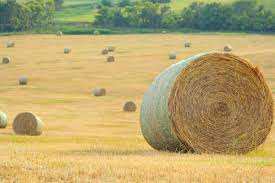
Harvesting wheat and cutting hay are staples of Oklahoma's agricultural heritage. But these activities can adversely affect Oklahoma's wildlife, especially upland game birds.
For hay farmers, this year is somewhat unusual, with plenty of early growth because of favorable weather. This means hay farmers might be cutting earlier, creating a greater potential for damaging effects on wildlife. A string of sunny days is likely to generate a flurry of activity in the hayfields, which could amplify any damage done to wildlife.
But with a little innovation and a watchful eye, farmers and ranchers can reduce the damaging effects of these operations on upland game and enhance populations on their properties.
When it comes to managing upland game birds, having a diverse mix of quality native grasslands, shrub thickets, wetlands, and weed-dominated sites such as old homesteads and fallow fields is the key. But when some or all of these components are in short supply, quail and pheasants must rely on additional, often subpar, habitats to survive.
Grass hayfields, as well as fields of green wheat, can be an attractive alternative to nesting birds, especially pheasants. Likewise, wheat and other agricultural fields usually offer good protective cover, plenty of bare ground, and a ready food source for brooding hens. But hay and wheat fields can adversely affect upland game birds if harvesting operations interfere with critical nesting and brood rearing periods.
Pheasant mortality can be greatly reduced by delaying the harvest of wheat as long as possible and incorporating weedy and grassy buffer strips within field interiors to serve as escape cover. Being mindful of these preventative measures and keeping mental notes on which fields or which portions of fields usually attract larger numbers of game birds can make a difference and lessen the overall impact.
As a general rule, fields that offer the highest plant diversity tend to be more attractive to birds than fields dominated by a single species or only a few species. In addition, patches of habitat that are "out of the ordinary" compared to the field as a whole are also likely to be more attractive. These types of areas can be good clues as to the potential presence of nesting or brooding hens and can be excellent areas to consider for future habitat conservation. At the very least, being mindful of these areas by reducing tractor speed in key areas of the field, walking out fields to flush birds, and/or avoiding entirely can help reduce wildlife impacts.
Click here to see more...